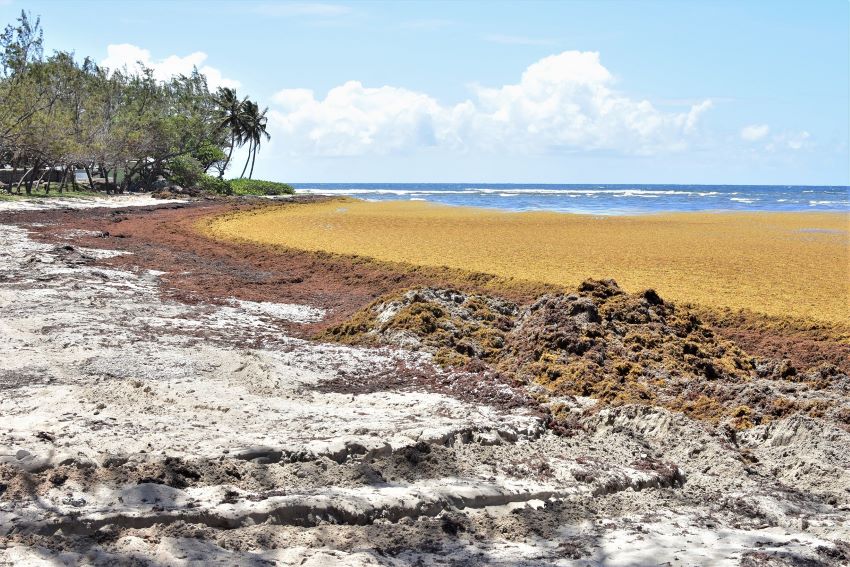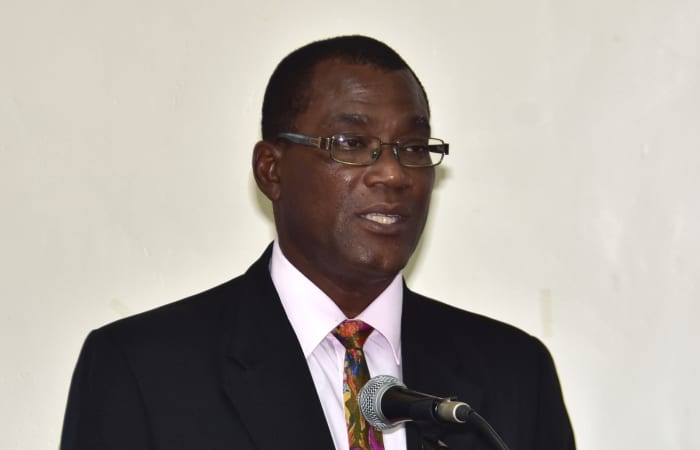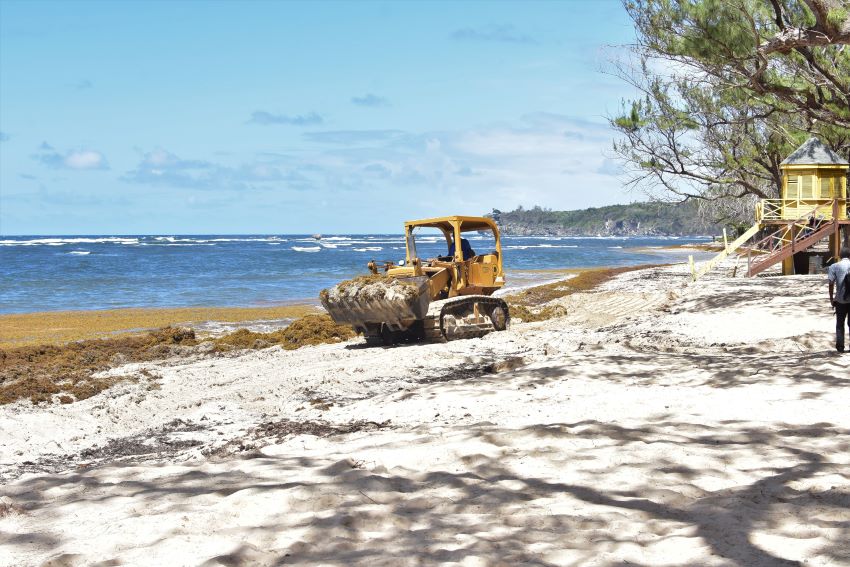
With another influx of Sargassum expected to start from as early as January 1, and heavy influxes from February 2024, Barbados is fighting back and seeking new ways to deal with the algae.
The island is set to be the first Caribbean country to benefit from deep sea research that could bring solutions to Sargassum inundation challenges by sinking the seaweed to the bottom of the ocean floor.
Scientists from the United Kingdom’s National Oceanography Centre (NOC), in collaboration with Seafields Integrated Environment Solutions and The University of the West Indies (UWI) Cave Hill Campus, have embarked on a project to understand the potential effects of using seaweed to store carbon dioxide from the atmosphere.
The project is co-funded by the UK Foreign Commonwealth and Development Office, and is valued at 100,000 pounds sterling.
Speaking during a press conference onboard the research vessel, the RSS James Cook, Director of the Coastal Zone Management Unit (CZMU), Dr. Leo Brewster, described the work as being “transformative for the island”.
“This project, in its own self, charts a new way forward globally, and it sets Barbados as being an island state that can actually look at using its strategic location within the ocean as a prototype testing centre for different avenues of marine research. This is something that has not been done before in Barbados,” he said.
The Director noted that the CZMU and the research section of the Marine Spatial Planning teams worked over the last year to find baseline data, background information, and anything that could speak to the island’s ocean, especially in the deeper waters.
Dr. Brewster further noted that the project enhanced that research and presented an opportunity for Barbadians to learn more about deep sea research. He also urged representatives from The UWI to form the necessary linkages to explore similar avenues in the future.
“The work that has been done by the [RSS] James Cook research vessel has been something that will open our eyes to opportunities within the blue economy structure. It will open avenues for us as to how we can develop our marine spatial plan….
“The significance of that is that new information can help guide us to better appreciate the resources that we have, learn more about what is on the ocean floor. That has significance for us,” Dr. Brewster stressed.

Meanwhile, Acting Minister of the Environment and National Beautification, Green and Blue Economy, Corey Lane, also commended work being done under the project, describing it as being “extremely important”.
“It is how do we treat to the Sargassum; how do we treat to removing Co2. It is all about compacting it, testing it, and putting it into areas of the ocean that have never been explored before. This is extremely scientific and is pioneering work,” he said.
He added that it was a major move for Barbados and the Caribbean, with the potential of having a global reach, if successful.
“We will analyse the findings which will dictate if we can scale it up, the results and technology, if that can be exported to the world. I do believe that some findings and some things we gather from this type of project could be of value to us financially,” he said.
Principal Marine Geoscientist at the NOC and project lead, Dr. Christopher Pearce, explained that work was done on two sites along the island’s coastline. Those are the west and south-east coasts. The work was conducted on the two sites of 1,000 metres and 4,000 metres water depth within the Exclusive Economic Zone.
“Carbon dioxide is the greenhouse gas that is helping to drive climate change. So, if we could bury the seaweed at the bottom of the ocean, it could potentially lock away some of the carbon dioxide for hundreds and thousands of years.”
Principal Marine Geoscientist at the NOC and project lead, Dr. Christopher Pearce
During those initial investigations, the team also took sediment and water samples and examined some of the animals found within.
He added that the team would return to sink Sargassum between February and April 2024. It will be left for a 12-month period before the research vessel returns to conduct further investigations as to how the bales have changed.
Dr. Pearce explained that under the three-year project, the seaweed would be deposited to the bottom of the ocean in a controlled manner.
“Countries are looking for ways to dispose of the Sargassum that is washing up on shore. In the Caribbean, there is limited land mass, where it can be problematic to dispose of it on the land itself.
“Some countries are already looking to dispose of it at sea, but we have not been able to get down to the bottom of the ocean to see what effects the seaweed has when it reaches the sea floor, or does it even reach the sea floor,” he pointed out.

Dr. Pearce said there was increasing interest in growing or harvesting Sargassum and other seaweeds and intentionally taking them down to the bottom of the ocean to lock away carbon dioxide.
“Carbon dioxide is the greenhouse gas that is helping to drive climate change. So, if we could bury the seaweed at the bottom of the ocean, it could potentially lock away some of the carbon dioxide for hundreds and thousands of years.
“It is potentially a win-win scenario dealing with Sargassum inundation and helping to tackle climate change. But, before we can take this forward we have to understand what the effects are on the deep sea communities and does it actually stay down there. The difficulty in doing this work is getting to the bottom of the ocean,” he pointed out.
British High Commissioner to Barbados and the Eastern Caribbean, Scott Furssedonn-Wood, also highlighted the challenges Caribbean countries faced with Sargassum, and noted that the UK was delighted to co-fund the research to assist its Caribbean partners in finding solutions to the regional Sargassum inundations.
